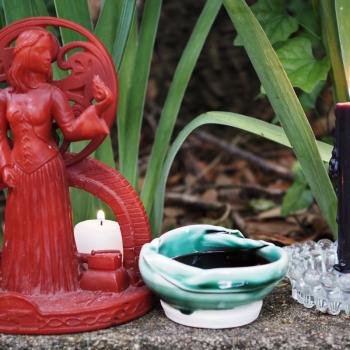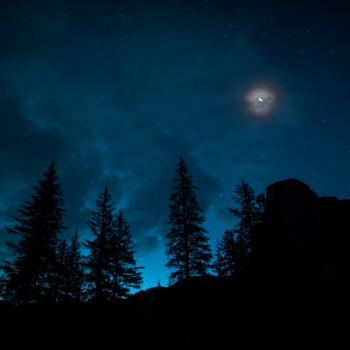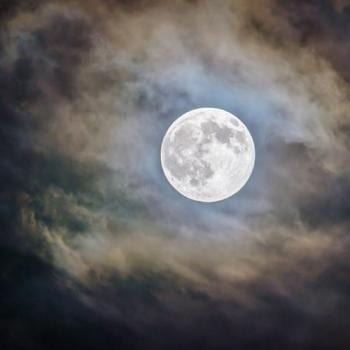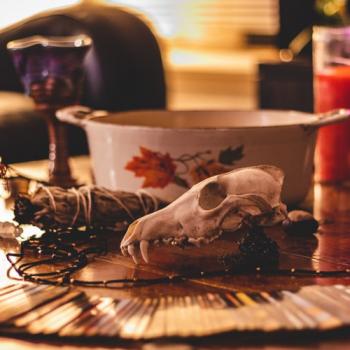Cyndi Brannen of Keeping Her Keys recently posed the question, “What is it that makes Witchcraft…Witchcraft?” I love this question because it not only allows us to see the tremendous variability in what Witchcraft involves for different people, but it also encourages me to revisit my own core beliefs. Sometimes, in the craziness that is life, we can lose focus of the fundamental elements that make up our identities as Witches. When feeling overwhelmed or stuck along my path, I have found that it’s immensely helpful to return to this core, to the basic nature of your Craft – in whatever variation that may be. You may be surprised by what new things you can learn!
As a Traditional Witch, I believe that there are three essentials of what makes Witchcraft, Witchcraft: the practice of magic, working with Spirits and the Otherworld, and connecting with the natural landscape.

First and foremost, to be a Witch means being a wielder of magical power. We cast spells, craft charms, and brew potions, all to effect change in our lives and the lives of those around us. This may be to help or to harm, as the Witch is dual-natured. We may offer a blessing to one person but may just as well overlook or hex someone else. When push comes to shove, Witches will be their own agents of justice. Whether it’s making a hex-bag, fixing a candle, or laying of the hands, Witchcraft involves the practice of magic.
Secondly, to be a Witch means to be a person of liminality. Witches possess the ability to cross the Hedge, to traverse the realms and then return home. In the Otherworld we can perform magical spells and rituals, fight spiritual battles, or attend the infamous Witches’ Sabbath. Furthermore, whether on the physical plane or in the Otherworld, we converse with various types of Spirits. They act as our magical partners, teachers, and guardians. We do not worship these Spirits but form active, personal relationships with them. Whether they are Gods, Goddesses, Ancestors, the Genii Loci, Faeries, or Familiar Spirits, Witchcraft involves working with Spirits and the Otherworld.
Finally, to be a Witch means being connected to the surrounding natural world. Witches view the world through a largely animistic lens, seeing the Spirit in all things, including the mountains, rivers, and fields. We establish deep relationships with the Genii Loci, doing what we can to protect nature from pollution and other forms of environmental degradation. In our spells we make use of the inherent virtues of plants, stones, and bones. We learn from valuable lessons from the flora and fauna, as well as from the planets and weather patterns. Whether we live in the countryside, the desert, or in the middle of a city, Witchcraft involves connecting with the natural landscape.

At this point you may be thinking, “But Kelden, many other traditions and practices involve those three things and aren’t considered Witchcraft.”
You’re absolutely correct. Which is why there is a secret fourth factor in what makes Witchcraft, Witchcraft. What is it? It’s simply calling yourself a Witch and calling what you do Witchcraft. This may not seem very romantic or glamourous upon first thought, but consider this: when you take on the label of Witch, whether you’re aware of it or not, you are tapping into a narrative that has been around for thousands of years. This narrative includes the history and folklore of Witches, both real and mythic, from around the world. When you call yourself a Witch you connect with a larger community of other Witches, whether they be a Trad Crafter, a Wiccan, or somewhere in between. Both the narrative and the community carry a weight, an immense power, that you take on when you declare yourself a Witch. The naming of yourself and what you do as Witchcraft can be a spiritual act, if your intentions are true.
Together, these are the things that I believe make Witchcraft, Witchcraft.
___________________________
WHAT IS WITCHCRAFT? WHAT MAKES SOMETHING WITCHCRAFT? More Thoughts by Patheos Pagan Writers
What Makes it Witchcraft? by Martha Kirby Capo at The Corner Crone
What Is A Witch? Defining Witchcraft For Both Past And Present Day by Scarlet Magdalene at Tea Addicted Witch
The Ever Changing Face of Witchcraft by Ian Chambers at By the Pale Moonlight
What Makes Witchcraft . . . . Witchcraft? by Cyndi Brannen at Keeping Her Keys
Defining Witchcraft: General and Personal by Morgan Daimler at Irish-American Witchcraft
On the Necessary, Ineluctable Otherness of Witchcraft by Misha Magdalene at Outside the Charmed Circle
Witchcraft Has No Gatekeepers by Jason Mankey at Raise the Horns
















